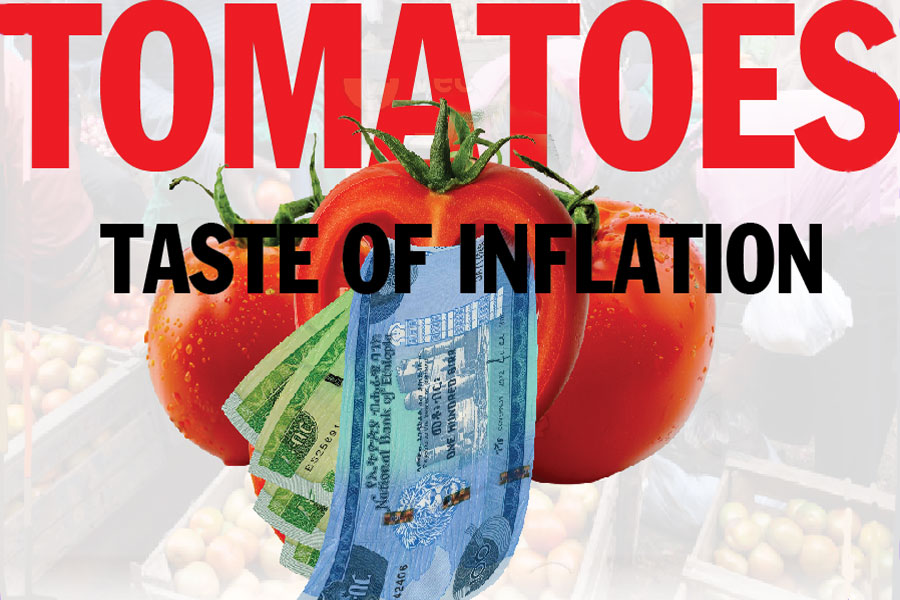
Dec 16 , 2023
By Carolyn Kissane
While strolling down a street with boutiques lined up one after the other, I came across a shop that displayed gorgeous dresses and shoes. It lured me to go inside. I picked up an item and asked for a discount right away.
The shopkeeper, who had just been in another price negotiation, was blunt in his response. He indicated that a price tag is on display for a reason and the choice of taking or leaving it was mine. I realised that it was a habit I picked up that was not always necessary.
Shopping in the streets of Addis Abeba is a unique experience. Interaction with vendors has a dynamics that has evolved through time. Our parents haggled to buy something and negotiation was part of pretty much every purchase.
Even when I recently went to Mercato -the largest open market- it was customary to ask for the retail and wholesale price of each item. The particular vendor I approached was exhausted from interacting with a pool of buyers. His usual assistants were nowhere to be found. I wondered how efficient his job would be if there was a price list for every item in the store, posted on the wall.
My friend quickly pointed out the instilled notion that disclosing the price to the public may give power to competitors to lower theirs. This madness has followed the digital world where online traders are hesitant to disclose the cost of their services and products. Of course, pricing is one point of competition. In a free market, a customer should check what is available and decide to purchase while a trader tries his luck to get more profit. But ease of access to customers to decide while ramping up on other value propositions seems an alternative.
The concept of putting a price tag on an item is surprisingly recent.
There is a folklore that the price tag was invented out of a religious connotation that all people should get equal prices, similar to how they were treated before the creator. It suggests that Quaker merchants came up with it while John Wanamaker, a men's clothing store owner, prominently placed prices on his products in 1861.
As some grapple to get the hang of it, the era of price tags might be nearing its end. Seeing advertisements of early bird discounts and last-call sales has become a common trend, particularly amongst event organisers, hailing that fixed price is not the only way to go.
Intrigued by this, I had a conversation with a friend who develops applications on the possibility of digitising the entire Mercato shopping experience. However, she was off-put by the idea, telling me that customers would still prefer to ask for help rather than take time to look for answers. She draws an experience where she makes a pitch to a potential client, preparing slides that guide them through the process. However, the nitty gritty questions that are explained in the slides make their way despite her efforts —because they prefer to be told rather than making an effort.
Perhaps this could be a result of upbringing, where parents offer to help their kids with tasks they were capable of handling on their own. As a result, they become reliant on others.
But I have learned my lesson. I witnessed the frustration of convincing customers that a fixed price is displayed to avoid unnecessary arguments and save time. I will either pay or leave without wasting anybody’s time on my next endeavour.
PUBLISHED ON
Dec 16,2023 [ VOL
24 , NO
1233]


Featured | Apr 22,2022

Commentaries | Jun 22,2024

Money Market Watch | Apr 13,2025

News Analysis | Mar 04,2023

Agenda | Apr 19,2025

My Opinion | Nov 21,2018

Radar | Jan 04,2020

Fortune News | May 17,2025

Viewpoints | Dec 16,2023

Life Matters | Jan 07,2022

Photo Gallery | 174477 Views | May 06,2019

Photo Gallery | 164704 Views | Apr 26,2019

Photo Gallery | 154878 Views | Oct 06,2021

My Opinion | 136678 Views | Aug 14,2021
Editorial | Oct 11,2025

Dec 22 , 2024 . By TIZITA SHEWAFERAW
Charged with transforming colossal state-owned enterprises into modern and competitiv...

Aug 18 , 2024 . By AKSAH ITALO
Although predictable Yonas Zerihun's job in the ride-hailing service is not immune to...

Jul 28 , 2024 . By TIZITA SHEWAFERAW
Unhabitual, perhaps too many, Samuel Gebreyohannes, 38, used to occasionally enjoy a couple of beers at breakfast. However, he recently swit...

Jul 13 , 2024 . By AKSAH ITALO
Investors who rely on tractors, trucks, and field vehicles for commuting, transporting commodities, and f...

Oct 11 , 2025
Ladislas Farago, a roving Associated Press (AP) correspondent, arrived in Ethiopia in...

Oct 4 , 2025
Eyob Tekalegn (PhD) had been in the Governor's chair for only weeks when, on Septembe...

Sep 27 , 2025
Four years into an experiment with “shock therapy” in education, the national moo...

Sep 20 , 2025
Getachew Reda's return to the national stage was always going to stir attention. Once...

Oct 12 , 2025
Tomato prices in Addis Abeba have surged to unprecedented levels, with retail stands charging between 85 Br and 140 Br a kilo, nearly triple...

Oct 12 , 2025 . By BEZAWIT HULUAGER
A sweeping change in the vehicle licensing system has tilted the scales in favour of electric vehicle (EV...

A simmering dispute between the legal profession and the federal government is nearing a breaking point,...

Oct 12 , 2025 . By NAHOM AYELE
A violent storm that ripped through the flower belt of Bishoftu (Debreziet), 45Km east of the capital, in...